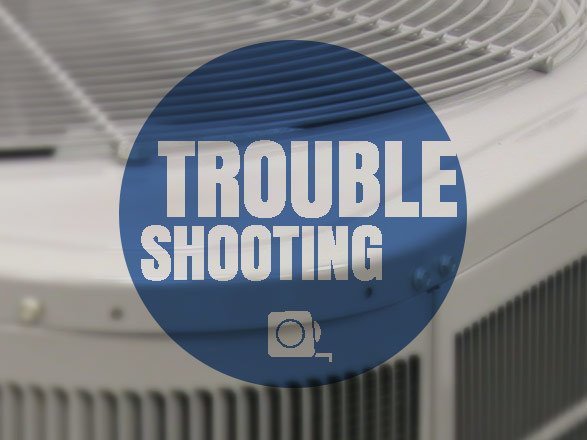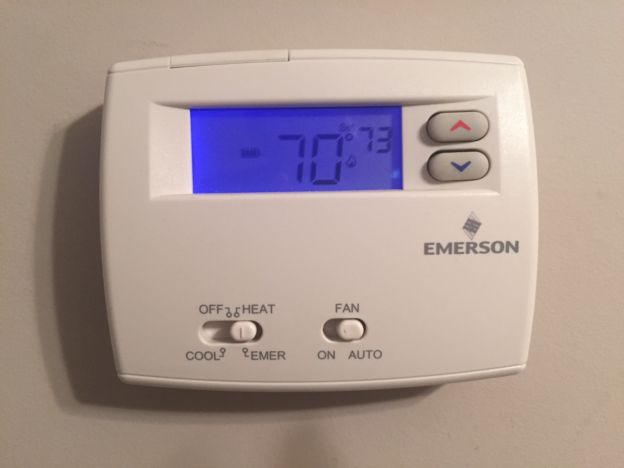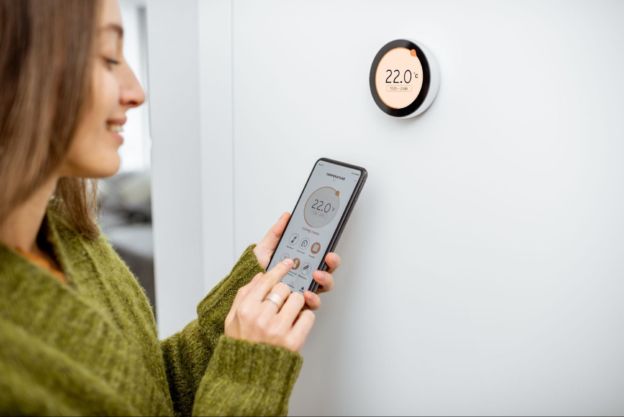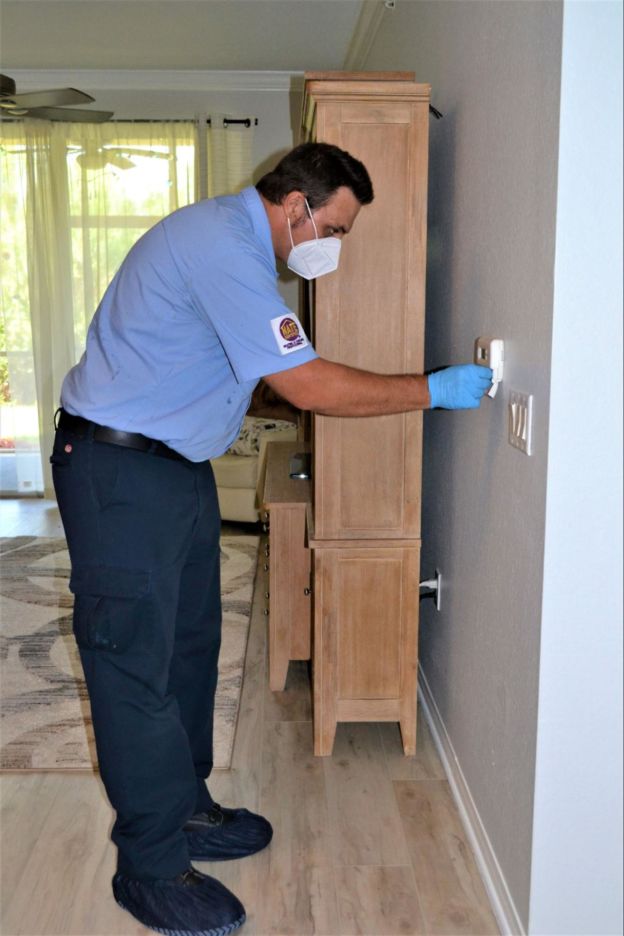Is It Easy to Change a Home Thermostat

Are you wondering if home thermostats can go bad?
It can feel like home thermostats are indestructible. Maybe your thermostat has lasted for years and years. And it's probably the last HVAC part you'd have in mind when a repair becomes necessary.
If you're wondering whether your thermostat can go bad, rest assured that it won't happen for a while. Thermostats don't typically have a set lifespan for maintenance, repair, or replacement (unlike air conditioners that need a tune-up every year). Still, you can generally expect your thermostat to last at least 10 years.
After a decade, thermostats may start malfunctioning. The thermostat's wiring starts to age, dust accumulates within the system, and the parts begin to wear down. Alternatively, you may just be ready for an upgraded thermostat!
In this article, we'll share signs that your thermostat is on its last leg and provide tips on troubleshooting a malfunctioning thermostat. For example, your thermostat may be going bad if:
- Your thermostat has no power or is unresponsive
- Your AC or heater won't turn on
- Your AC or heater constantly runs
- Your temperature doesn't match your thermostat
We'll cover the above problems and ways you can troubleshoot the thermostat to see if your thermostat is experiencing a temporary malfunction or needs to be checked by a professional.
Want a professional to check your thermostat ASAP? Contact Advanced Air.
Our technicians are always punctual, transparent with pricing, and ready to back up their work with a 100% satisfaction guarantee. So you can be sure you're getting the best thermostat repair or replacement possible when you contact Advanced Air.
4 Signs Your Thermostat Is Bad
Your Thermostat Has No Power or Is Unresponsive
The most obvious sign that your thermostat might be bad is if it has no power or is unresponsive. If there's no change in your home's temperature when you adjust the temperature, or the display is unlit or unresponsive, you might have a broken thermostat on your hands. Alternatively, it may just be the batteries, so check that out before you call.
Your AC or Heater Won't Turn On
Is your AC or heater unresponsive? Are you hearing a clicking noise, but it's not turning on? It could be a control board issue, a broken relay, or a wiring defect in the thermostat that prevents electrical signals from being sent to your cooling or heating system. When the thermostat cannot correctly send commands to the HVAC system telling it to turn on or off, it's going bad.
Your AC or Heater Constantly Runs
When your AC or heater constantly runs and won't shut off even when your home feels like it's at the right temperature, it could be because of frayed wiring or miscalibrated thermostat settings. If your thermostat is not registering that your home is already at the right temperature, your AC or heater will continue to run.
Unsure if your thermostat is correctly reading the temperature? You can acquire a thermometer and place it near your thermostat and check the readings after a few hours to compare.
Your Temperature Doesn't Match Your Thermostat
A more subtle sign of a broken thermostat is when room temperatures don't match each other. Unless you have a ductless AC and can zone your home to have different temperatures between each room, your home should likely have a similar temperature throughout different parts of the house. Slight fluctuations in temperature between rooms are normal sometimes, but constant jumps in temperature between rooms could point to a faulty thermostat.
How To Troubleshoot a Bad Thermostat
Have you noticed any of the above tell-tale signs? If so, follow the following five steps to troubleshoot a bad thermostat:
1. Make Sure the Thermostat Is on the Right Setting

Make sure your thermostat is set on AUTO.
While this seems like an obvious step, it's one that homeowners can miss, especially with a non-programmable thermostat.
Your thermostat should be on HEAT during winter and COOL during the summer months.
If your AC or heater is constantly running, your thermostat may be incorrectly set to "ON." This mode causes the HVAC system to continually run and blow air out of the vents, even if it's not cooling or heating the air. You'll want to adjust the settings to "AUTO" so the system only runs when it's actively cooling or heating the air.
2. Turn the Thermostat Up or Down 5 Degrees

Check to see if your thermostat is bad by turning it up or down five degrees.
You can test if your thermostat is having issues by trying one of these steps, depending on the season:
- Setting the temperature 5 degrees lower than your usual in the summer
- Setting the temperature 5 degrees higher than your usual in the winter
As you adjust the thermostat, you should hear the thermostat click and the HVAC system kick on. Wait a few minutes to see if your supply register vents blow out conditioned air or if your return vents suck in air. If nothing happens, you might need to reset your circuit breaker, then contact a professional HVAC technician.
3. Replace the Batteries
An easy way to troubleshoot a bad home thermostat is to replace its batteries if you have a digital thermostat. If that fixes it, remember to replace the batteries every year. You can watch our video above about how to replace thermostat batteries.
4. Clean the Thermostat
If you don't have a digital thermostat, you can quickly troubleshoot a mechanical one by cleaning it. A mechanical thermostat will have a little lever that moves the temperature settings. Over time, they can start to malfunction because of dust.
You'll want to clean the thermostat by removing its cover and dusting the inside with a small brush like a toothbrush or a microfiber cloth to take the top layer of dust off. You can also use compressed air to clean the thermostat gently.
5. Check and Test Wires and Wire Connections
Regardless of the type of thermostat you have, you'll want to remove the thermostat's cover and check the wires to ensure they're all firmly connected to their respective mounting screw.
If you see the below scenarios, it's time to hire a professional:
- Visible fraying
- Loose connections
- Good looking wires despite your thermostat not working properly
A professional HVAC technician will open up the thermostat and test each wire individually to see which is faulty and needs replacement. Dealing with the wiring yourself can be dangerous, so you'll want to contact a certified HVAC technician.
Need Thermostat Help From a Trusted Professional? Contact Advanced Air.

Enjoy the benefits of a new smart thermostat by contacting Advanced Air for installation.
When you contact Advanced Air for a thermostat repair or replacement, we'll send out one of our trusted technicians to your home and get your HVAC system working in no time. With hundreds of 5-star reviews, we're rated the best in Southwest Florida by far! Our punctual team backs up our work with an ironclad 100% satisfaction guarantee and upfront pricing.
If you want to install a new smart thermostat, we have various options for you to choose from. For example, the Lyric Wi-Fi thermostat can sense when you're close to home and adjust the temperature in response. And the Trane XL824 thermostat will allow you to monitor usage to manage energy costs better. It'll even remind you when to change out your air filters!
Source: https://advanced-air.com/help-guides/troubleshooting/do-home-thermostats-go-bad
Post a Comment for "Is It Easy to Change a Home Thermostat"